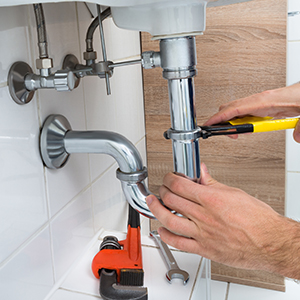Uh oh…You Dropped Your Ring Down the Drain…
How many times has this happened to you? You dropped the ring down the drain. Or an earring in the bathroom sink. If it has, it’s not as hard as you think to recover that lost piece of jewelry. Most likely, the drain pipe under your bathroom sink is made out of PVC pipe, unless you have an older home. In that case, you may have a little bit more difficulty taking a metal drain pipe apart.
Get Started
Nevertheless, the first step is to make sure you have all the right tools.
You’ll need a set of groove joint pliers, a bottle brush, rubber gloves, and, of course, don’t forget the bucket or a bowl to catch the water in the drain pipe when you disassemble it. The groove joint pliers and bottle brush can be purchased at any hardware store; you can get a set of the pliers as inexpensive as under $10.
Now, under your bathroom sink is a P-trap drain; is a U-shaped pipe that connects the sink drain to the drain outlet in the bathroom back wall. The P-trap passes sink wastewater while blocking stinky sewer gas from entering the bathroom. And it also traps small objects. Like that ring down the drain…
Turn Off the Water

The first thing to do is to turn off (clockwise) the water to the sink faucet locally (shutoff valves are shown in the picture). While this is not really necessary, it always pays to be safe. You don’t want someone else in your home to turn on the sink water if you step away for a minute or two while the drain pipe is removed.
Place the bucket/bowl underneath the P-trap to catch any drain water that may spill when you remove the trap.
Put on your rubber gloves. Some of the stuff coming out of the drain pipe could be fairly nasty. Locate the compression nuts on both ends of the trap assembly (also shown in the picture above). One connects the trap to the tailpiece, which is the pipe that extends down from the sink. And the other one connects to the drain. Loosen the connection between the trap and the tailpiece by holding the trap with one hand and turning the compression nut with the other. Turn the nut counterclockwise with respect to the tailpiece. Now, use the same technique to loosen the pipe slip nut on the other end of the U-shaped part of the trap.
You should first, try to do this with your hands. The rubber gloves should increase the friction between your hand and the nuts if the nut is wet and your hand begins to slip. A rag will work just as well to create the friction. If this doesn’t work though, then use the groove joint pliers, which you may need to use anyway if you have a metal drain. Even the most corroded nut holding a metal drain trap will eventually turn; but, if the corrosion is extreme, consider replacing the metal trap with a plastic (PVC) one.
After Loosening the Nuts, Pull the Trap Gently Downward and Let it Drop into the Bucket.
Clean any gunk from the P-trap with a bottle brush and clean water. If looking for an object – like the ring down the drain – check the trap, bucket bottom and any gunk cleared out of the trap.
Once you find your missing earring, ring, etc., position the cleaned trap so the proper end goes to the sink drain. Note that one end is usually higher/longer than the other end. So, it should be easy to see which end goes where. Hold the trap up to connect to the sink drain and wall drain pipes and then tighten the slip nuts. Do this by hand first. Then turn on the water to the sink faucet and check the drain for leaks. If you find a leak, then tighten the slip nuts with the groove joint pliers. However, try to not over tighten as you may crack the PVC pipe.
Call Us
Did you drop your engagement ring down the drain? Or anything else of significant value? If you’re too nervous to attempt this yourself, feel free to call us. We are available 24-7 to help you out. Contact us today! And let’s get that expensive ring down your drain back onto your finger where it belongs!


